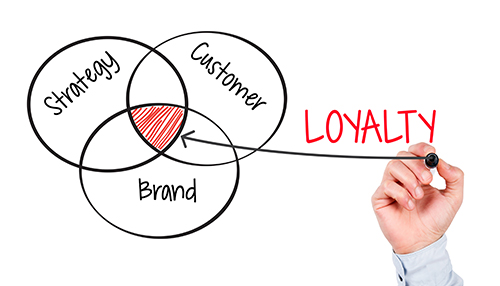Why is it so hard to gain loyalty? What makes a loyalty program attractive?
A recent report from Colloquy provides information on the state of Customer Loyalty. Here are some key findings on customer loyalty programs from retailers, the travel and hospitality industry, and financial services as well as emerging programs in entertainment and other industries:
- Although loyalty memberships are up 15% from two years ago,
- The majority (54%) of loyalty memberships are inactive
Why is it so hard to gain loyalty? The members who are not participating in loyalty programs say these are the reasons why:
- It takes too long to earn rewards
- They don’t appreciate or find value in the rewards
- The company sends too much communication
- The communication isn’t relevant
- 26% opted out of the program because there was no mobile app available
What does make a loyalty program attractive? Members say: 1) it’s easy to use, 2) it’s easy to understand, and 3) the members receive great discounts.
The Role of Employee Recognition and Engagement
The link between recognition and employee engagement is well documented, but what role does employee engagement play in the customer experience?
Highly engaged employees impact the customer experience and, accordingly, customer loyalty in the following ways:
- Better Customer Service. Highly engaged employees are focused on the customer experience and “sweat the small stuff” by paying attention to the smallest details.
- A Better Brand Experience. Engaged employees love what they’re selling and are typically trained on their products and services (either formally through the organization or on their own) so that they are providing information that the customer can use to make their decision. Engaged employees understand that, although they are the embodiment of the brand, it’s ultimately all about the customer.
- More Customer Focus. Highly engaged employees design better customer loyalty programs. It’s also critical that the support for an exceptional customer experience is driven from the top down. Company leaders who encourage team members to craft consumer programs are laser focused on the customer and explore how they can continue to provide value in exchange for loyalty.
Engaging the Consumer in Loyalty Programs
Technological advances continue to provide the ability to increase personalization and offer real-time loyalty point accumulation, as well as redemption. The Colloquy report tells us that the majority of consumers will still trust an organization with their personal information in order to register for a loyalty program. Colloquy offers these tips to make our programs attractive enough to keep the consumer engaged and earn their loyalty:
- Create loyalty to the brand rather than just the program. If discounts are the only thing attracting members, you won’t be able to create real engagement. Some brands further engage loyal customers by turning them into brand ambassadors.
- Make the redemption the experience. In most programs, all of the excitement is geared around the accumulation of points. Make the celebration around the reward redemption.
- Eliminate pain points. Structure your program so that it removes some negatives in the customer experience. (Starbucks reduced the problem of long lines by offering a way to “skip the line” via their mobile app).
- Continuous improvement. Technology is ever-changing and will continue to offer new ways to improve and personalize the customer experience. Don’t just “set and forget” your customer loyalty program.
Because we know that customers quickly disengage when they are bombarded by too many messages or by irrelevant messages, it’s clear that execution of loyalty programs is critical. It’s not just about what message is sent or how it is communicated – it’s about how the message is received by the consumer.
Create a customer loyalty program that is customer-focused, easy to use and understand, and provides real value, and you’ll earn loyal customers.

